Resources by Rob O'Lynn
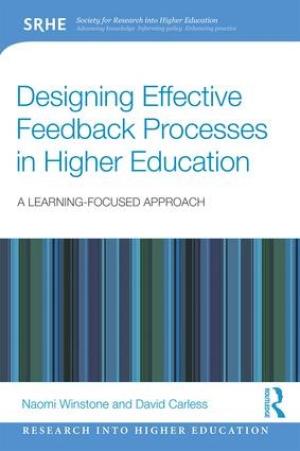
Feedback is one of the most powerful influences on student achievement, yet it is difficult to implement productively within the constraints of a mass higher education system. Designing Effective Feedback Processes in Higher Education: A Learning-Focused Approach addresses the challenges of developing effective feedback processes in higher education, combining theory and practice to equip and empower educators. It places less emphasis on what teachers do in terms of providing commentary, and more emphasis on how students generate, make sense of, and use feedback for ongoing improvement. Including discussions on promoting student engagement with feedback, technology-enabled feedback, and effective peer feedback, this book: -Contributes to the theory and practice of feedback in higher education by showcasing new paradigm feedback thinking focused on dialogue and student uptake -Synthesises the evidence for effective feedback practice - Provides contextualised examples of successful innovative feedback designs analysed in relation to relevant literature -Highlights the importance of staff and student feedback literacy in developing productive feedback partnerships -Supports higher education teachers in further developing their feedback practice. Designing Effective Feedback Processes in Higher Education: A Learning-Focused Approach contributes to the theory and practice of higher education pedagogy by re-evaluating how feedback processes are designed and managed. It is a must-read for educators, researchers, and academic developers in higher education who will benefit from a guide to feedback research and practice that addresses well recognised challenges in relation to assessment and feedback. (From the Publisher)
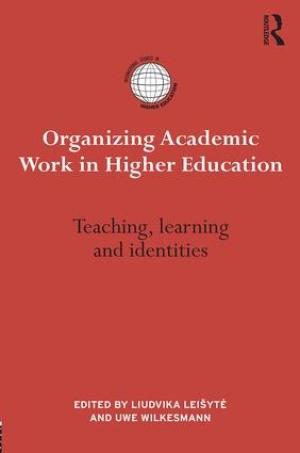
As much as teachers would like to argue to the contrary, the university is a business, an educational business to be specific. Universities, colleges, technical schools and the like are in the business of selling learning. They sell this product to those who see the need for education beyond the formative years, whether that be training in a trade or preparation for an occupation such as medicine, psychology, or religious service. Institutions of higher learning have been in existence for around a millennium, and have served as a tent pole artifact for institutional culture – universities have either set the bar of cultural progression or have fallen behind, sputtering to keep pace with the practitioners outside their hallowed walls who are establishing new trends and raising the bar set by the university. We seem to be in a contextual epoch that is squarely set between each of these extremes. There is still a hushed reverence that comes from finding a peer who attended Harvard, Stanford, Princeton, or Emory. Many in the academic community clamor to hear special lectures from Continental colleagues who have attended or are employed by Oxford, the University of Paris, or the University of Amsterdam. In some pockets, simply having a college or graduate degree can still mean higher pay, positional advancement, or advanced social standing. In the United States, we seem to be living in a time of both saturation and scarcity. Higher learning institutions are continually creating new and engaging programs to prepare interested individuals for securing employment in an ever-evolving, technologically-driven, globally-emerging marketplace. And yet the number of students seems to be shrinking as many weigh the cost of attending college or find that their career choice may not even require a college degree. Responsiveness to the changes taking place in society and academic preparation for those changes is of concern for leaders at universities, colleges, and trade schools. On one hand, the administration crunches numbers and devises business strategies to ensure that the institution remains open. On the other hand, faculty craft courses and develop programs to ensure that teaching is what keeps the institution open. This is the discussion that editors Leisyte and Wilkesmann present before the reader. Assembling over twenty scholars from across the globe, this volume demonstrates that the New Public Management model can be used to successfully organize institutions of higher learning. In providing specific examples from Germany, China, the UK, and the Netherlands, as well as individual authors speaking out of their own experiences, this volume shows how academic managers can integrate business-based operational models with rubric-based educational models to promote academic integrity and marketplace relatability. Change will continue to be the one true constant of the educational universe, and this volume provides a good map for the road ahead.
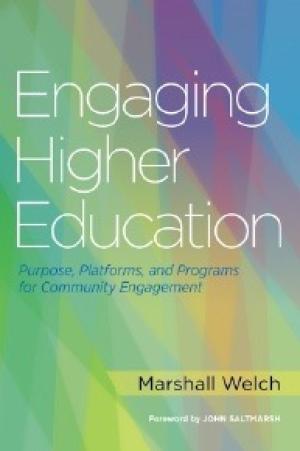
The standard perception of higher education in the United States is that it is only for the elite (or those middle-class folks who are willing to take out massive loans to pay for their education). However, the founding concept behind public higher education was to allow all who wish to earn an advanced degree the opportunity to do so. Obviously, the schema appears to have changed. Financial considerations, admissions standards, and other limitations can produce obstacles to admission. One way to overcome these obstacles is the Community and Technical College system. This system has flourished as a result of offering skills-based training in a number of readily employable fields. Another way to surmount obstacles to higher education, and the one that is the subject of this review, is through community engagement. Community engagement occurs when an institution of higher learning opens its doors to the general public and seeks to partner with them in providing academic and professional training. Community can occur in one of two ways: the institution can seek partnerships with the public through campus events or community service, or the public can seek partnerships with the institution through fieldwork arrangements or training programs. Obviously, this can also be a two-way street where the institution and the community collaborate in the engagement process. Welch’s volume is based on the Carnegie Foundation’s significant research study on existing community engagement offices at several major American universities and the conceptual writings on community engagement by John Saltmarsh. Welch outlines the purpose of, platforms for, and programs involved with community engagement. The strength of the volume is Welch’s thorough analysis and systematizing of the Carnegie report. However, the volume promises more than that; it promises to provide practical direction for how schools can connect with their community to implement these platforms and programs. This is where the volume falls short of expectations. As mentioned previously, this book is quite voluminous when it comes to the analysis and quantification of the Carnegie study. And if it had simply stayed there, this would have been an insightful and thought-provoking volume that naturally leads to two other volumes by the same publisher that appear to be connected (Publically Engaged Scholars edited by Post, Ward, Longo, and Saltmarsh, and Community Partner Guide to Campus Collaborations by Cress, Stokamer, and Kaufman). However, the book also attempts to craft an implementation plan for community engagement. It waffles between institutions partnering with community liaisons to provide internships for human services or business students on the one hand and developing institution-based think-tanks that, through strategic partnerships, craft economic and political policy through instructor-student-sponsor relationships on the other. Ultimately, Welch’s volume becomes a never-ending firehose that could lead to bloated institutions scrambling to keep their doors open or to anemic institutions beaten down by unnecessary feelings of academic and professional inferiority.
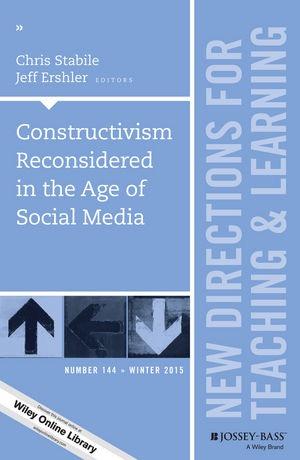
I was recently talking with my former doctoral advisor about a new position I accepted with the university where I teach. His seminary is exploring innovative ways of delivering courses, and I wanted his counsel as I investigate moving my programs completely online. As we were talking, he simply said, “The educational landscape has changed, and we must change with it if we are to survive.” This is something that I am fully aware of and advocate for. However it meant something more profound coming from someone who I respect, someone who has been at the forefront of practical ministry education and yet often concedes that keeping up today is more difficult than ever. It is time to change. And not just our feelings on distance or online education, for that is now simply a question of location. Education occurs in the classroom, and that classroom may be in a traditional face-to-face format or an online format or both. In short, distance or online education is here to stay. The challenge that is before us remains a consistent two-fold challenge: what content will we deliver, and how will we deliver that content. This two-fold challenge is both a matter of content and context (or community). It is because of this essential nature of education that constructivism has maintained such a central theory of education. Originally devised as an educational theory by John Dewey and provided a psychological foundation by Jean Piaget, constructivism is a process where a learner constructs meaning based on their subjective perception of objective reality. Briefly stated, constructivism is an active process where learners construct meaning together in a learning community through their shared experience rather than simply receiving processed information from an expert. Content is gauged against the individual and shared experiences of the learning community as meaning is generated out of conversation, collaboration, conflict, and consensus. All of this is essential to understanding the profound nature of this short collection of essays which is the focus of this review . Stabile and Ershler, the editors, have gathered together a team of educational constructivists to assess the theory’s continued validity in this social media era. By their own admission, “Social media is constructivist” because it “embodies constructivism itself as the users engage in the development of their own meaning” (1). While this volume tackles the enormous complexity that is the digital village, the technical use of social media is not the focus here. It is assumed that faculty are tweeting, instagramming, snapping, and pinning along with their students (or, at least, are aware that this is how people communicate today). No, the focus is on whether constructivism remains a viable option for engaging the learning process. Each of the authors seems to give a shared assent, then, to two assertions: (1) the social media era is inherently invested in crafting meaning through the shared experience of community engagement; therefore (2) constructivism remains a (if not the) viable learning theory because of its focus on crafting meaning through shared experience of community engagement. If we who teach undergraduate, graduate, doctoral, and post-doctoral students are going to remain relevant, then we must no longer see ourselves as experts who disseminate information to our paying customers. We must see ourselves as conversation partners, community facilitators, and wise mentors. We must begin constructing the classroom around a workable theory that respects our current digital age. Thankfully, for those who are unfamiliar with learning theories, Stabile and Ershler offer a timely and thoughtful collection of essays to introduce the reader to an essential theory that is still as useful today, if not more so due to the connectivity of the social media age, as it was when crafted nearly a century ago.
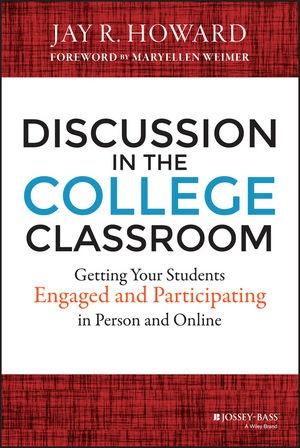
A single-frame cartoon rests on the upper right-hand corner of my university office door. A professor stands before a full room of students; the board behind her is full of lecture material, most likely a quantum mechanics equation based on the arrows and lines. She is smiling from ear to ear having finished, saying to herself, “That was a great lecture.” Across from her sit her students. They are wide-eyed and, collectively saying to themselves, “I am so confused!” The caption underneath declares it all: “Great Moments in Teaching.” I can hear the collective groaning even as I type. I would like to think that I am becoming a good professor. Not just a good professor, but an effective professor, one who is shaping the minds of future leaders. Many professors would like to think that of themselves. That is why many are in the noble profession of education. The question is, then, are teachers effective in the classroom? Jay Howard’s Discussion in the College Classroom opened my academic eyes to be sensitive to teaching better. I had fallen into the trap similar to that of the professor in the comic – I assumed that because there were no questions the students had listened to and processed everything that I had said. Howard calls this “civil attention,” something that the author claims has become common in college classrooms across the country. According to Howard, the current generation of college students are good students who want to show respect to their faculty members. They do this by quietly checking their Twitter feed, reading the latest Reddit forum, or watching a Vine post from one of their friends. They will laugh in the right places, answer the patented questions correctly and perform well on our rubric-based tests not necessarily because we are the sensational sages that we think we are but because they have learned how to beat the system at its own game – civility receives an “A.” Howard has an antidote for this type of dilemma – figure out your students, how they learn and process information, and then guide them in discussions in ways with which they can effectively engage. As many writers have mentioned, teachers need to become partners in the educational journey. The difference with Howard is that he has mounds of data to back up this assertion. What the book lacks is practical application for contemporary classroom contexts (only the final chapter offers any actual advice on bettering a teacher’s discussion abilities).
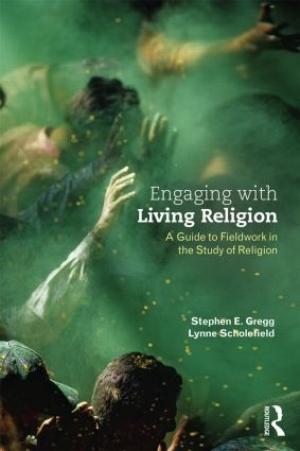
What is “religion”? Many would argue that religion is the single most important element of a person’s existence: “I am [Christian, Buddhist, Jewish, et cetera] and my understanding of reality is predicated by my religious affiliation.” Others would argue that it is nothing more than a sociological aspect of a person’s existence. “I am [Christian, Buddhist, Jewish, et cetera], and it is important to me in the same way that my Irish, Indian, or Russian heritage predicates my social interactions.” On one hand, we have persons who understand themselves within the context of their religion. On the other hand, we have persons who understand their religion within the context of themselves. Yet, how does one define religion? One definition that I have found helpful for many years is from Winfried Corduan’s tome Neighboring Faiths: “A religion is a system of beliefs and practices that provides values to give life meaning and coherence by directing a person toward transcendence” (InterVarsity, 1998, 21). This definition provides a simple construct for understanding what religion is and what it does without taking sides. Whether one is on the devout or the affiliated end of the spectrum, people might generally agree that the purpose of religion is to teach people values that will give life meaning. The next question, then, is how should students in higher educational classroom contexts study religion? Talk about a tricky wicket! Any student of religion is going to have shelves of books that all make the same claim – this one has the answer! Some offer tremendous analysis on the all-encompassing and captivating nature of religion. Others provide summative studies of various religions that may stir the reader’s appetite for meaning and transcendence. Still others provide a sociological approach to the study of religion, a field manual for understanding why persons cling to religious belief and practice that belief as they do. Authored by religious studies professors Stephen E. Gregg (University of Wolverhampton) and Lynne Scholfield (St. Mary’s University, Twickenham), Engaging with Living Religion offers a practical introduction to the field study of religion. The intention of the book is not to develop religious ideation or affiliation in its readers, but to provide a professionally-appropriate way for researchers to analyze and comprehend why Christians pray with their eyes closed, why Muslims pilgrimage to Mecca, and why Jews light a menorah. While this last statement may sound simplistic, it is anything but – each of these actions are essential expressions of that religion and, as the authors argue, one cannot understand Christianity, Islam, Judaism, or any other religion without understanding the liturgy and locations that provide structure to the world’s religions. Designed as a guide for the fieldwork student (or as a study companion in a lecture course on religious sociology), Gregg and Scholefield create not only a keen eye for studying religion but also a deep respect for religious adherence. Although the volume does take more of a sociological stance – religion is more akin to a social activity or organizational membership than a guiding force for one’s life – the authors keep the idea that religion is living ever before the reader/researcher. Each chapter is bursting with sidebars, such as passages from foundational readings or case studies, discussion questions, recommended bibliographies, and websites for further research. Although this is a book about the study of religion, one thought comes through subversively on every page – Religion, however it is defined, is living and active, and it provides meaning and direction to individuals seeking transcendence. Therefore, treat it with care and respect. Overall, I found this volume to be both intriguing and engaging. In addition to a chapter that advocates why studying religion is important, there are chapters on where to study religion, how to study religion through class field trips or study-abroad programs, how to use case studies and social media to understand religion practically, and how to develop an ongoing appreciation for the sociological study of religion. My recommendation would be that this volume be read alongside a more extensive volume on ethnography. Van Maanen’s Tales of the Field (University of Chicago, 2011) or Emerson, Fretz, and Shaw’s Writing Ethnographic Fieldnotes (University of Chicago, 2011) would constitute good choices.
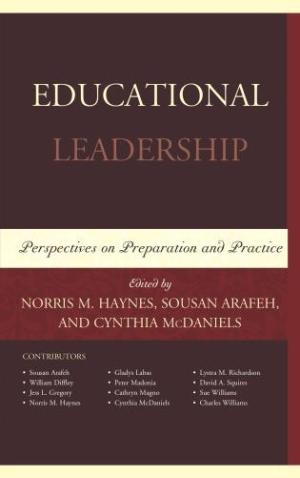
National and global cultural constructs are changing faster than ever, oftentimes faster than those who educate can keep apace of. The challenge presented in this volume is clearly stated in Haynes’s introduction: Education leaders “must accept responsibility for accessing and mobilizing all available resources to support students’ total development and for demonstrating that they are making a significant and measurable positive difference in turning present educational trends around” (viii). A popular mantra of leadership theory as first proposed by James McGregor Burns, John Maxwell, and Max De Pree, and later repopularized by Jim Collins, Malcolm Gladwell, Chip and Dan Heath, and Michael Hyatt, is that leaders are responsible for creating organizational culture. Therefore it is imperative that educators, both those who are currently in leadership positions (discipline chairs, principals, superintendents, school board representatives, and so forth) and those who aspire to leadership positions, take seriously this challenge of creating a culture for effective learning by demonstrating that they are effective leaders and worthy of being followed. Following the challenge-laden Introduction, the volume is divided into three sections, with each section focusing on a different aspect of educational leader development. Each section opens with a short introduction from one of the editors. The first section (chapters 1 to 4) focuses on “core knowledge” elements for teachers and educational leaders, such as public policy (chapter 1), Knowles’ theory of self-directed andragogy (chapter 2), Goleman’s theory of emotional intelligence (chapter 3), and education as social justice (chapter 4). The second section (chapters 5 to 9) focuses on professional development for educational leaders, such as developing an ecological framework for the educational setting (chapter 5), leading educational reform (chapter 6 and 8), developing a global perspective on education (chapter 7), and seeking continuing education once on the field (chapter 9). The final section (chapters 10 to 14) suggests strategies for improving the learning experience, such as utilizing applied research (chapter 10) and program evaluation (chapter 11), developing a multicultural approach to learning (chapter 12), and implementing balanced curriculum (chapter 13) and technology (chapter 14) into the teaching model. This volume would be most applicable to a course in educational leadership development. It certainly draws from the wealth of the experience provided by the contributors. It is most appropriate for elementary and secondary educators and educational leaders (and those who instruct in that field). However it does have value for those who teach in other disciplines at the undergraduate or graduate level. I found the chapters on policy and balanced curriculum to be most helpful. There are a couple of concerns that should be noted: First, while it is subtle, there is a tinge of socialist rhetoric used throughout the volume. It is most prominent in chapter 4 where the co-authors equate social justice with socialist reform. Second, there is a sense of almost blind acceptance, despite the growing amount of evidence-based literature to the contrary, of Common Core standards throughout the book. Both of these concerns go hand-in-hand and should be considered by the prospective reader.